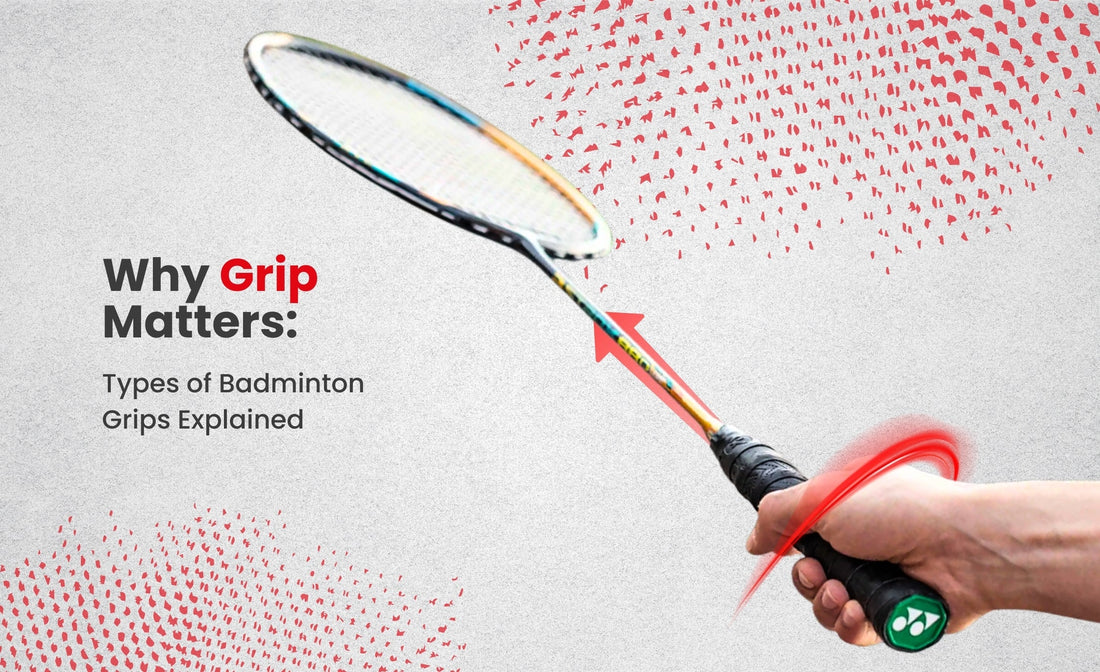
Why Grip Matters: Types of Badminton Grips Explained
When you think of playing badminton, you might imagine fast smashes, quick footwork, or even fancy net shots. But have you ever thought about your grip? That’s right—how you hold the racquet plays a big role in your game. In fact, using the right grip can improve your shots, prevent injuries, and make you a better player overall.
Let’s break down why grip matters and the different types of grips every badminton player should know.
Why Does Grip Matter in Badminton?
Imagine trying to draw with a pencil held the wrong way—it won’t work well, right? The same goes for your racquet. The right grip helps you:
- Control your shots better
- Generate more power
- Switch quickly between strokes
- Avoid wrist and elbow injuries
A poor grip can limit your movement, cause strain, and reduce the impact of your shots. Whether you're a beginner or aiming to go pro, understanding grip basics is essential.
- Forehand Grip
Also called the "shake hands grip", this is the most common grip and is mainly used for overhead shots like clears, smashes, and drives.
How to use it: Hold the racquet as if you’re shaking hands with it. Your thumb should rest comfortably on one side, and there should be a V shape between your thumb and index finger.
When to use:
- Forehand clears
- Forehand smashes
- Forehand drives
- Backhand Grip
Used for backhand shots, especially when you don’t have time to switch to a forehand. It gives you the angle and control needed from the other side of the body.
How to use it: Turn the racquet slightly from the forehand position so your thumb rests flat against the wider bevel of the handle. This gives more power and support during the shot.
When to use:
- Backhand clears
- Backhand drops
- Backhand serves
- Bevel Grip
A mix between the forehand and backhand grip, the bevel grip is often used for smooth transitions, especially during backhand overhead shots.
How to use it: It’s almost like a backhand grip, but your thumb is placed at a slight diagonal angle, not completely flat.
When to use:
- Backhand overhead clears
- Backhand smashes
- Panhandle Grip
Named because it looks like you’re holding a frying pan. It's commonly used for quick shots at the net or in awkward situations.
How to use it: Hold the racquet straight up as if it's a frying pan handle. Your thumb and fingers will be on the sides of the grip.
When to use:
- Net kills
- Flat pushes
- Quick blocks
- Thumb Grip
This grip is important for backhand net shots and drives. It gives you extra push and control using your thumb.
How to use it: Hold the racquet like a backhand grip but press your thumb more firmly on the flat side of the handle.
When to use:
- Backhand drives
- Defensive blocks
- Net shots
Pro Tips for Choosing the Right Grip
- Practice switching grips smoothly. It makes a big difference in fast rallies.
- Avoid gripping too tightly. It can limit movement and cause fatigue.
- Keep your hands dry. Use a towel or grip tape if your hands get sweaty.
- Check your grip size. Too thick or too thin grips can affect your performance.
Final Thoughts
In badminton, your grip is the foundation of every shot. Learning the right grip techniques early can help you play smarter, stronger, and safer. So, the next time you pick up your racquet, take a moment to check your grip—it might just be the secret to your next winning shot!
Keywords for SEO:
badminton grips, types of badminton grips, forehand grip, backhand grip, bevel grip, panhandle grip, thumb grip, badminton basics, badminton for beginners, improve badminton game, how to hold badminton racquet





